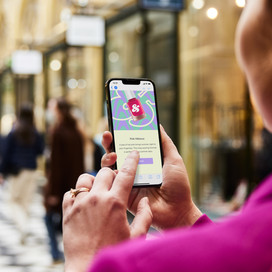Table of contents
Looking to keep your customers coming back for more? If you don’t have one already, a loyalty program is a great way to encourage customers to return, again and again.
Eighty-one percent of consumers agree that loyalty programs make them more likely to continue doing business with a brand, according to a study by Bond in collaboration with Visa. And in fact, 80 percent of Australians are part of at least one loyalty scheme. And according to our insights, participants enrolled in a Square Loyalty program spend, on average, 33 percent more after they join than before.
Once you’ve decided to start a loyalty program (or maybe you already have one), you need to set it up. Using insights from the thousands of businesses that use Square Loyalty, we’ve discovered the most useful best practices for creating (and maintaining) a successful loyalty program.
Your loyalty program needs to have a reward that people want and a path to getting it easy enough (but not too easy) and relatively quick. With that in mind, we recommend that all programs — regardless of format — use these guidelines:
Most transactions should qualify for a star
At least 80 percent of your transactions should be eligible for a star. We see some sellers prefer to set strict rules for earning a star to incentivise customers to purchase more. However, data suggests that doing so discourages customers from engaging in your loyalty program and creates a negative perception of your business.
Customers should earn a reward in a timely manner
Settings that allow loyal customers to earn a reward within 30 days of enrolling are most successful. If they wait over 30 days, customers are more likely to forget they’re enrolled in a loyalty program and don’t make a point to return to the business.
Offer a meaningful reward
Our research indicates that customers have greater satisfaction and are more likely to continue engaging with a loyalty program if the reward is worth at least 50 percent of your average ticket value and 10 percent of what they spent to earn the reward. Your customers have expressed their loyalty to your business, so why not make the reward worth it?
Now that you have some handy guidelines, you’re ready to decide your loyalty program format. You should keep three things in mind when choosing which format will work best for you:
- Your business’s average transaction size
- How often your customers return to your business and
- How long it takes them to do so
Here are some loyalty program formats that we recommend:
1. Visit programs
Visit-based programs are best if your customers visit your business at least once per week. We often see this in businesses with lower-priced items, like a coffee shop with a coffee loyalty card.
You can determine the value needed to reward your customers in a timely fashion using this equation:
Average customer return time (Days) x (Number of stars required to earn a reward – 1) = Time to reward.
For example, a cafe wants to reward its customers after they earn five stars. Its customers return every three days. Their time to reward (upon enrolling and getting their first star) is 12 days.
2. Spend programs
Spend-based programs are best if your customers visit your business once a month, or even less frequently. This usually includes businesses with high-priced items, luxury services, or long sales cycles.
You can determine the value needed to reward your customers in a timely fashion using this equation:
Average customer return time (Days) x (Purchase requirement to earn a star) x (Number of stars required to earn a reward – 1) / Average transaction size = Time to reward
For example, a salon would like to reward clients for spending $100 or more on services. Its clients come in every two months for styling and spend $75 per visit on average. The salon might consider a four-star program where clients earn a star for every $25 spent.
3. Item/category programs
Item-based programs are best if you have a particular item you’d like to promote, such as a high-margin item or a best seller. They take longer to set up but can be well worth it if you are conscious of the margin you get out of your digital rewards program.
Once you’ve set up your loyalty program — or rejigged your existing program — make sure you promote it to your customers and get them using it.
Build an email marketing campaign about the program or post about your rewards on your social account. And make sure your employees promote the customer loyalty program during checkout; you might even put a sign about it at the counter.
The more you invest in promoting your loyalty program, the more people you can turn into loyal customers.
![]()











